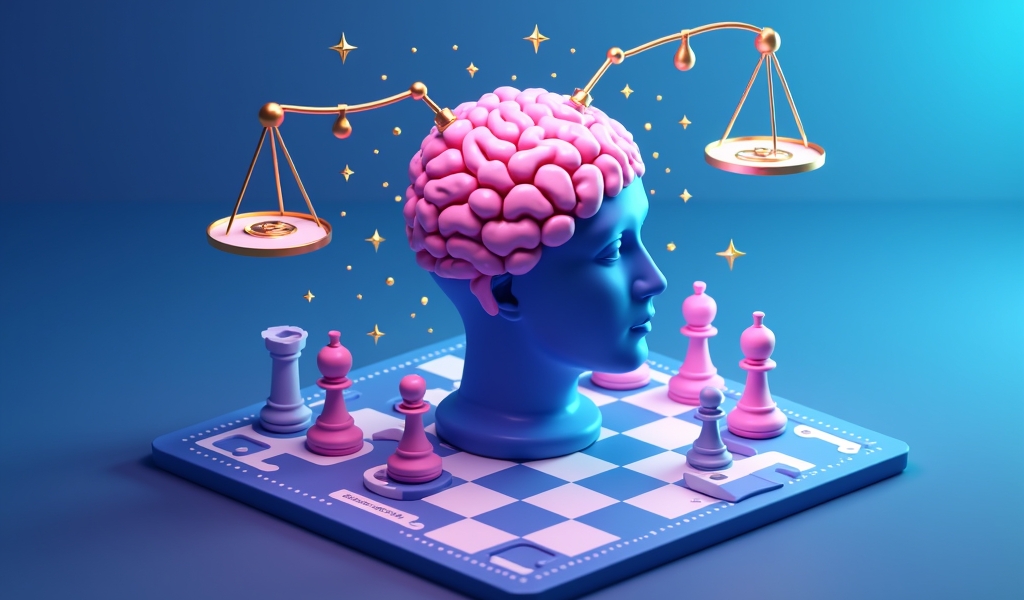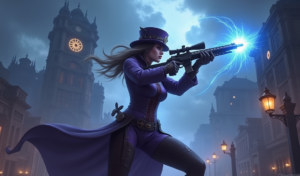Overview
To improve decision making in League of Legends, players must master seven key strategies including developing a pre-game framework, enhancing map awareness, tracking cooldowns, learning from mistakes, practicing decision trees, understanding risk-reward calculations, and improving team communication. These comprehensive approaches combine preparation, information gathering, and strategic thinking to transform average players into decisive competitors who can consistently make better choices under pressure, ultimately leading to more victories on the Rift.
Table of Contents
Looking to improve decision making in League of Legends? You’re not alone. Even the most mechanically gifted players can struggle to climb if they consistently make poor strategic choices. Decision making is arguably the most crucial skill that separates average players from those who dominate the Rift.
In the fast-paced environment of League of Legends, split-second decisions can mean the difference between securing objectives, winning team fights, or throwing your lead entirely. Whether you’re a Bronze player looking to escape ELO hell or a Diamond player aiming for Master, enhancing your decision-making process will dramatically improve your win rate.
Let’s dive into seven proven strategies that will help you make better choices in your games, climb the ranked ladder, and become the decisive, impactful player your team needs.
Understanding Decision Making in League of Legends
In League of Legends, decision making encompasses every choice you make during a match. From champion selection to your final move in the enemy base, these decisions compound to determine the outcome of your games.
Decision making in LoL involves strategic thinking about when to trade in lane, when to roam, when to contest objectives, and how to position in team fights. Unlike mechanical skills that can be drilled through repetition, good decision making requires critical thinking, game knowledge, and situational awareness.
The challenge is that League doesn’t provide immediate feedback on your decisions. A bad call might work out due to enemy mistakes, while good decisions can sometimes fail due to execution errors. This makes it difficult to identify and improve your decision-making process without deliberate analysis.
The Importance of Good Decision Making in LoL
Poor decision making can single-handedly lose games, even with a gold lead. We’ve all experienced those frustrating matches where your team throws at Baron or chases kills instead of taking inhibitors. These aren’t mechanical failures – they’re decision-making errors.
On the flip side, superior decision making can overcome mechanical disadvantages. A player with excellent game sense can outperform opponents with better mechanics by being in the right place at the right time. This is why many League of Legends coaching sessions focus heavily on decision-making fundamentals.
According to Riot Games’ own data, macro decision making becomes increasingly important as players climb in rank. While mechanics might get you to Gold, strategic decision making is what carries you to Diamond and beyond.

Strategy 1: Develop a Pre-Game Decision Framework
To improve decision making, start before the game even begins. Develop a pre-game framework that guides your initial decisions based on matchups and team compositions.
Begin by asking yourself these critical questions:
- What is my win condition in this matchup?
- How does my champion synergize with our team composition?
- What are the enemy team’s strengths and weaknesses?
- Should I play aggressively or focus on scaling?
- Which objectives will be most contested based on our comps?
For example, if you’re playing Nasus into Darius, your pre-game decision might be to focus on safe farming and improve wave management near your tower. This framework gives you a strategic foundation that informs in-game choices.
Pro players use this approach religiously. Watch how they discuss draft strategies and game plans in pre-game team huddles. You can adopt this same structured thinking to make better initial decisions that set you up for success.
Strategy 2: Master Map Awareness for Informed Choices
You can’t make good decisions without good information. Working to improve map awareness is crucial for making informed choices throughout the game.
Develop these map awareness habits:
- Glance at the minimap every 3-5 seconds
- Track enemy jungler movements
- Note when key enemies disappear from lanes
- Monitor respawn timers for major objectives
- Observe wave states in all lanes
Better map awareness leads directly to better decision making. When you know the enemy jungler is top side, you can make an informed decision to play aggressively in bot lane or contest dragon. When you see multiple enemies showing on the map, you can confidently make a play on the opposite side.
As noted by professional coaches at Inven Global, map awareness is consistently rated as one of the most important skills to develop for climbing in ranked play.
Strategy 3: Track Cooldowns and Timers
Superior decision making comes from having more information than your opponent. One of the most effective ways to improve decision making is by tracking important cooldowns and timers.
Key timers to track include:
- Enemy summoner spells (Flash, Teleport, etc.)
- Ultimate abilities of key champions
- Jungle camp respawns
- Objective spawns (Baron, Dragon, Herald)
- Enemy item active cooldowns (Zhonya’s, Galeforce, etc.)
Knowing that the enemy mid laner has no Flash gives you a 5-minute window to exploit their vulnerability. Understanding that Baron is spawning in 30 seconds helps you make decisions about positioning and vision control.
Many high-ELO players keep track of these timers through chat timestamps or voice communication. Developing this habit will dramatically improve vision timing and strategic decision making around the map.
Strategy 4: Learn from Your Mistakes
To truly improve decision making, you must analyze your mistakes objectively. The best way to do this is through VOD review – watching recordings of your games to identify decision-making errors.
When reviewing your gameplay, ask yourself:
- What information did I have at this moment?
- What decision did I make based on that information?
- What was the outcome?
- What would have been a better decision?
- What additional information would have helped?
Focus particularly on game-changing moments – deaths, lost objectives, or failed ganks. These are usually the result of decision-making errors rather than mechanical mistakes.
Working with an online LoL coach can accelerate this process, as they can point out decision-making patterns you might miss. Many top players attribute their improvement to rigorous self-analysis and learning from mistakes.
Strategy 5: Practice Decision Trees
Decision trees are a powerful mental model for improving your in-game choices. A decision tree maps out possible scenarios and corresponding responses, helping you make faster, more consistent decisions.
For example, a basic jungle decision tree might look like:
- IF enemy jungler shows top AND dragon is up THEN move toward dragon
- IF multiple enemies are visible top AND Herald is up THEN consider Herald
- IF all enemies are missing AND objectives aren’t up THEN play defensively
By developing these mental frameworks in advance, you reduce the cognitive load during intense game moments. Instead of panicking or hesitating, you’ll have pre-planned responses ready.
Many LoL coaching services focus on building these decision trees for common scenarios. The more you practice thinking this way, the more natural good decision making becomes.

Strategy 6: Understand Risk vs. Reward
Every decision in League involves weighing risk against potential reward. Improving your ability to calculate these tradeoffs will significantly enhance your decision making.
When facing a decision, quickly assess:
- What’s the best possible outcome?
- What’s the worst possible outcome?
- How likely is each scenario?
- Is the potential gain worth the risk?
- Are there safer alternatives with similar rewards?
For example, going for a risky Baron call when ahead might gain you a small advantage but risk throwing the game. A safer play like taking an inhibitor first might offer similar benefits with less risk.
Learning to improve objective control involves understanding these risk-reward calculations around major objectives. According to professional coaches, poor risk assessment is one of the most common mistakes players make across all ranks.
Strategy 7: Improve Team Communication
Even the best individual decisions can fail without team alignment. Improving your communication skills is a crucial aspect of better decision making in League.
Effective communication includes:
- Making clear, concise calls
- Sharing critical information (enemy summoners, vision spots)
- Signaling intentions before acting
- Using pings thoughtfully
- Maintaining a positive tone even in tense moments
Good communication ensures that your team makes coordinated decisions rather than five individuals making separate choices. This alignment is especially crucial during the laning phase when setting up ganks or roams.
Research from Riot’s behavioral team shows that teams with positive, strategic communication win significantly more games than those with poor or toxic comms, regardless of mechanical skill.
Conclusion
To improve decision making in League of Legends requires a multifaceted approach combining preparation, information gathering, analysis, and communication. By implementing these seven strategies, you’ll develop the decision-making skills that separate good players from great ones.
Remember that improving your decision making is a gradual process. You won’t transform overnight, but with consistent practice and self-analysis, you’ll see your choices become more effective and your win rate climb accordingly.
The most successful League players aren’t necessarily those with the flashiest mechanics – they’re the ones who consistently make good decisions under pressure. By focusing on the fundamentals outlined in this guide, you’ll be well on your way to making better choices that lead to more victories on the Rift.
Now it’s time to queue up and put these strategies into practice. Your journey to improve decision making starts with your very next game!
Frequently Asked Questions
How long does it take to improve decision making in League of Legends?
Improving decision making is an ongoing process that typically shows noticeable results after 2-4 weeks of dedicated practice and review. Consistent application of the strategies in this guide will accelerate your progress.
Can decision making skills translate between different roles in LoL?
Yes, while each role has unique decision points, the fundamental principles of information gathering, risk assessment, and strategic thinking apply across all positions. The core decision-making framework remains consistent regardless of role.
Is it better to make a fast decision or the right decision?
In League, making a timely decision that your team follows is often better than making the perfect decision too late. The ideal is quick, good decisions, but team alignment on an imperfect plan typically outperforms individual perfection.
How do pro players make decisions so quickly?
Professional players have developed extensive mental libraries of scenarios and responses through thousands of hours of practice and review. They essentially recognize patterns rather than analyzing each situation from scratch, allowing for faster decisions.
Should I focus on improving mechanics or decision making first?
For most players, improving decision making offers greater returns on investment, especially beyond Gold rank. While basic mechanical proficiency is necessary, superior decision making will consistently outperform slightly better mechanics in the vast majority of games.




